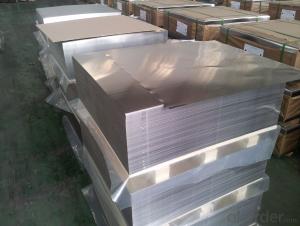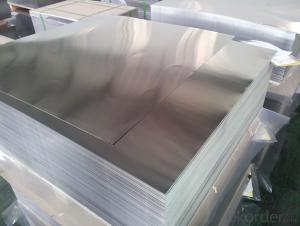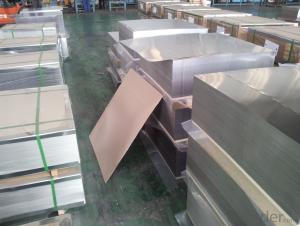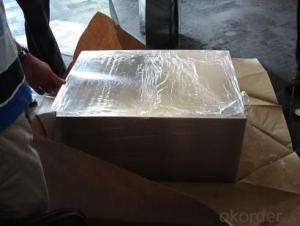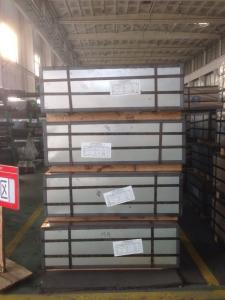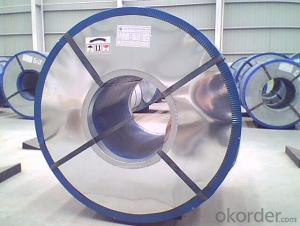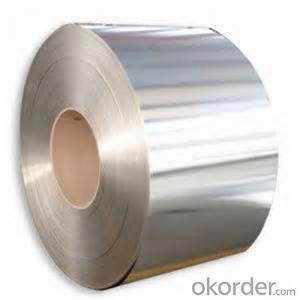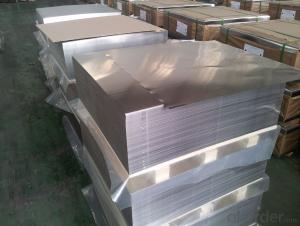High Quality of Tinplate for Food Cans Containers
- Loading Port:
- China Main Port
- Payment Terms:
- TT OR LC
- Min Order Qty:
- -
- Supply Capability:
- -
OKorder Service Pledge
OKorder Financial Service
You Might Also Like
Our tin plate (TP) products are made by coating tin using electrolysis on the surface of thin coldrolled steel sheet (black plates), with a thickness of 0.14~0.6 mm. Its shiny surface finish, superb corrosion resistance and formability make tin plates an ideal choice for the food industry and industrial parts producers. Our tin free steel sheet (ECCS) is widely accepted as a more economical substitute for the tin coated steel. Our TP/TFS products are widely used in the production of 3-piece and 2piece (D&I, DRD) cans as well as can lids and bottoms. Our products serve a variety of purposes, including material for steel EOE, toys, and electronic parts.
Our Tinplates Specification:
Standard: ISO 11949 -1995, GB/T2520-2000,JIS G3303,ASTM A623, BS EN 10202
Material: MR,SPCC
Thickness:0.15mm - 0.50mm
Width: 600mm -1150mm
Temper: T1-T5
Annealing: BA & CA
Coil Inner Diameter: 508mm
Weight: 6-10 tons/coil 1~1.7 tons/sheets bundle
Passivation:311
Oil: DOS
Surface: Finish,bright,stone,matte,silver
Packing:
1、For sheets: plastic or waterproof paper, metallic cover and angles, steel strips,wooden pallet.
2、For Coils: plastic or waterproof paper,plastic protect plate,steel strips.
Both Prime and Second Quality Are Available!!!
- Q: What are the regulations regarding tinplate packaging?
- The regulations regarding tinplate packaging vary depending on the country or region. However, in general, tinplate packaging must comply with certain standards to ensure its safety and suitability for use. These standards may include specifications for the tinplate material, its thickness, coating composition, and overall quality. Additionally, regulations often exist concerning labeling requirements, such as providing accurate information about the contents, proper handling instructions, and any necessary warnings. It is essential for manufacturers and suppliers to stay updated on the specific regulations applicable to their respective markets to ensure compliance and consumer safety.
- Q: How long does tinplate last?
- Tinplate can last for several decades if properly maintained and protected from corrosion.
- Q: What are the different ways to recycle tinplate containers?
- There are several different ways to recycle tinplate containers. One common method is to separate the tinplate from any other materials, such as plastic or paper, and then melt it down to create new tinplate products. Another option is to crush or shred the containers into small pieces, known as scrap, which can then be used as raw material for manufacturing new products. Additionally, recycling facilities may also use advanced technologies to separate the tinplate from any coatings or contaminants before recycling it.
- Q: What are the main applications of tinplate in the marine industry?
- Tinplate is commonly used in the marine industry for various applications such as manufacturing of cans for food and beverages, corrosion-resistant coatings for ship components, and protective packaging for marine equipment and supplies. Additionally, tinplate is also used for decorative purposes, such as in the production of marine-themed items and accessories.
- Q: What are the different types of tinplate closures available?
- Some of the different types of tinplate closures available include twist-off caps, lug caps, crown caps, and press-on caps.
- Q: How does tinplate packaging contribute to product protection against light?
- Tinplate packaging contributes to product protection against light by providing a durable and opaque barrier. Its metallic properties prevent light from penetrating through the packaging, thus minimizing exposure to UV rays and other forms of light that can degrade the quality and shelf life of sensitive products.
- Q: Cookies with tinplate packaging has what advantage?
- Barrier: tinplate cans have excellent barrier properties than any other materials are excellent, gas barrier properties, moisture resistance, shading and aroma were good, and the sealing is reliable, reliable protection products.
- Q: How does tinplate affect the overall product shelf appeal?
- Tinplate can significantly enhance the overall product shelf appeal by providing a visually attractive and premium packaging solution. Its metallic appearance and smooth finish can give a sense of elegance and quality to the product, making it stand out among competitors on the shelves. Additionally, tinplate allows for creative and eye-catching designs, ensuring that the product grabs the attention of potential customers and entices them to make a purchase.
- Q: What are the regulations and standards related to tinplate packaging?
- The regulations and standards related to tinplate packaging vary depending on the country and industry. However, some common regulations and standards include specifications on the composition and thickness of tinplate, labeling requirements for product information and safety warnings, guidelines for food contact materials, and regulations for recycling and environmental sustainability. It is important for manufacturers and suppliers to comply with these regulations to ensure the safety and quality of tinplate packaging.
- Q: What are the main factors influencing the pricing of tinplate?
- The main factors influencing the pricing of tinplate include the cost of raw materials such as tin and steel, supply and demand dynamics in the market, production and transportation costs, global economic conditions and trade policies, technological advancements in the tinplate industry, and fluctuations in currency exchange rates. Additionally, any regulations or tariffs imposed on tinplate imports or exports can also impact its pricing.
Send your message to us
High Quality of Tinplate for Food Cans Containers
- Loading Port:
- China Main Port
- Payment Terms:
- TT OR LC
- Min Order Qty:
- -
- Supply Capability:
- -
OKorder Service Pledge
OKorder Financial Service
Similar products
Hot products
Hot Searches
Related keywords
